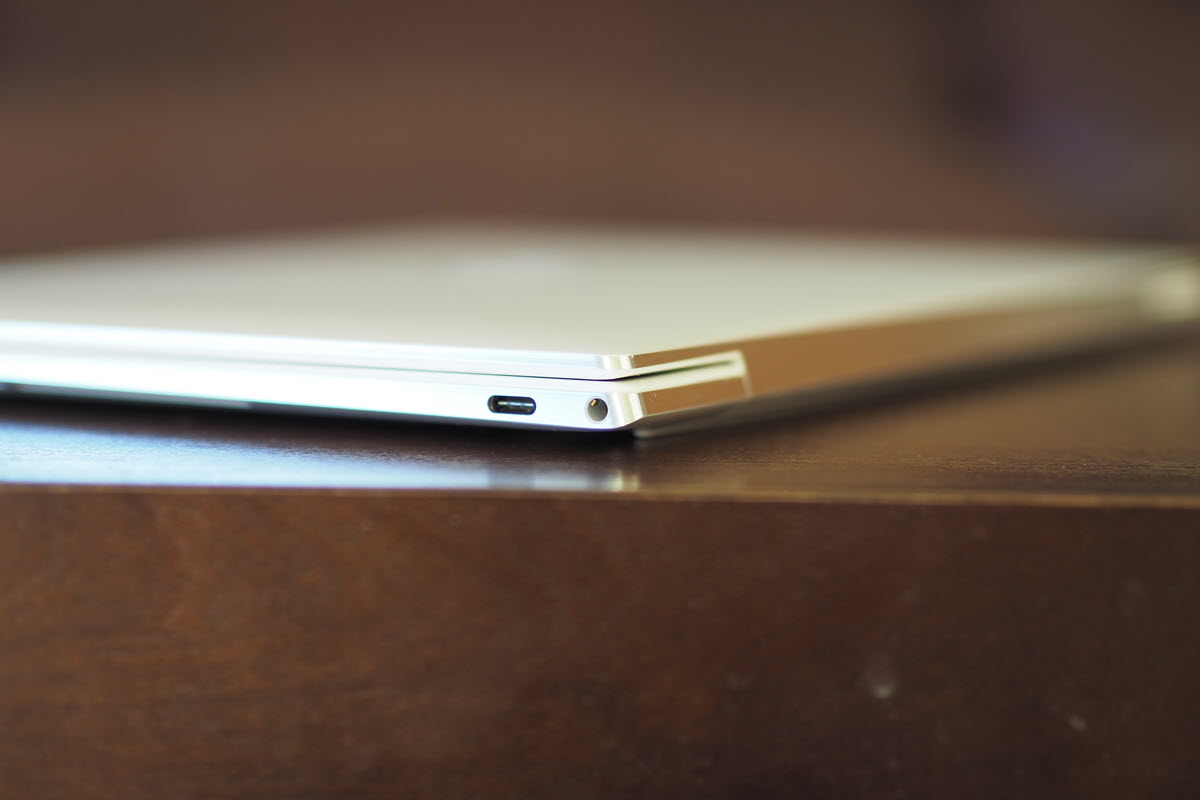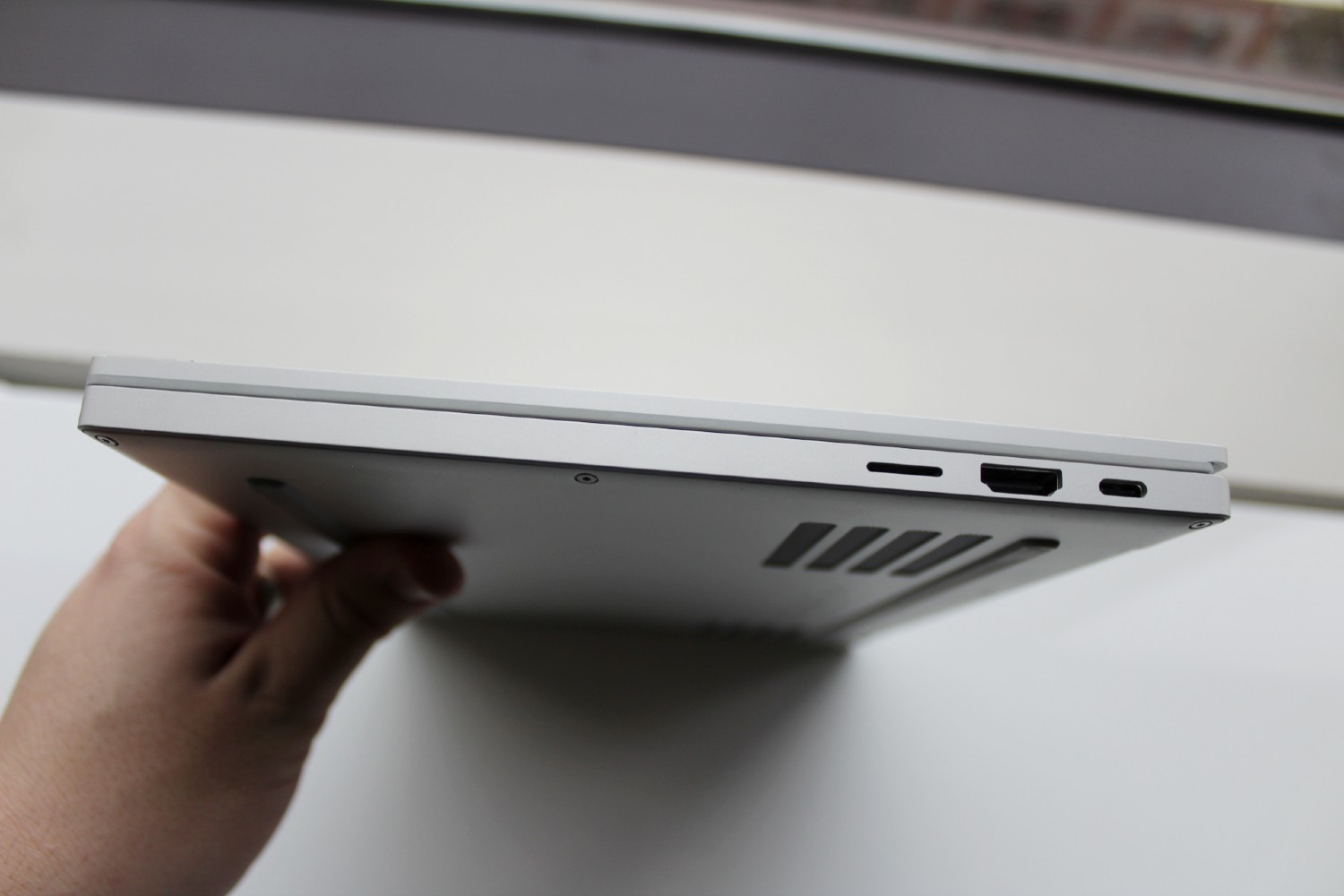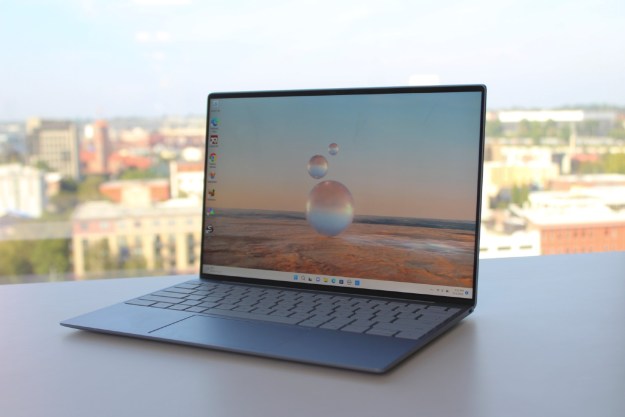The Dell XPS 13 has dominated among 13-inch clamshell laptops for several years, making our best laptops list as the top pick and showing up on several other lists such as our best laptop for writers roundup. The 13-inch laptop is a popular machine, and so there are many competitors. Some of them are excellent in their own right, but so far, none have dethroned the XPS 13. Razer jumped into the fray with its Razer Book 13, which we called “nearly the perfect laptop.”
Pitting these two against each other seemed quite natural. Does the Razer Book 13 have what it takes to take over first place?
Specs
| Razer Book 13 | Dell XPS 13 | |
| Dimensions | 11.6 inches x 7.8 inches x 0.60 inches | 11.64 inches x 7.82 inches x 0.58 inches |
| Weight | 2.95 pounds | 2.8 pounds |
| Processor | Up to Intel Core i7-1185G7 | Up to Intel Core i7-1185G7 |
| RAM | Up to 16GB RAM | Up to 32GB RAM |
| Display | 13.4-inch IPS 16:10 | 13.4-inch IPS 16:10 |
| Resolution | Full HD+ (1,920 x 1,200) non-touch, Full HD+ touch, UHD+ (3,840 x 2,400) touch | Full HD+ (1,920 x 1,200), Full HD+ touch, UHD+ (3,840 x 2,400), OLED 3.5K (3,456 x 2,160) touch |
| Storage | Up to 512GB SSD | Up to 2TB SSD |
| Touch | Touch optional | Touch optional |
| Ports | 1x USB-A 3.1, 2X USB-C with Thunderbolt 4, 1x HDMI, 3.5mm audio jack, microSD reader | 2x USB-C with Thunderbolt 4, 3.5mm audio jack, microSD reader |
| Wireless | Wi-Fi 6 and Bluetooth 5.1 | Wi-Fi 6 and Bluetooth 5.1 |
| Webcam | 720p with infrared camera for Windows Hello | 720p |
| Operating System | Windows 10 Home | Windows 10 Home or Pro |
| Battery | 55 watt-hours | 52 watt-hours |
| Price | 1200+ | $950+ |
| Rating | 4 out of 5 stars | 5 out of 5 stars |
Design

The Razer Book 13 is crafted from machined aluminum and fits the Razer’s understated yet modern design aesthetic. The Razer logo on the lid stands out, but otherwise, this is a laptop with clean lines and a conservative look.
Open it up, and what stands out most are the RGB LEDs on the keyboard, which adds some style in addition to functionality via 15 (!) levels of brightness (the XPS 13 has three) and customizable colors. The XPS 13 is made from a mix of machine aluminum and carbon fiber, with the former constructing the outside of the chassis and the latter making up the keyboard deck. The palm rests are particularly comfortable thanks to the material, more so than the cold metal of the Book 13, and the XPS 13 has a more distinctive look. It’s also clean and streamlined, but it has a more modern and elegant look.
In terms of their size, the Book 13 and XPS 13 are almost identical. There are just fractions of an inch separating them in all dimensions and of pounds in their weight. Both are among the smallest 13-inch laptops you’ll find, and both feel great in hand.
Speaking of feel, both laptops are robust, with no flexing or bending anywhere in the lid, the chassis, or the keyboard. These are truly premium
Connectivity is one differentiator, with the Book 13 offering more ports than the XPS 13 and more legacy support, including USB-A and HDMI. The XPS 13 is limited to USB-C with Thunderbolt 4 (which the Book 13 also equips), meaning you’ll need dongles with the Dell where you won’t with the Razer. Both laptops offer Wi-Fi 6 and Bluetooth 5 wireless connectivity.
Performance

We reviewed the Book 13 with an 11th-gen Intel Core i7-1185G7 CPU and the XPS 13 with a Core i7-1165G7. Even so, performance was, for the most part, very similar. Both laptops are quite speedy for any productivity tasks you’ll want to throw at them, and neither is well-equipped for demanding apps like video editing.
To demonstrate just how closely matched these laptops are, consider our Handbrake test that encodes a 420MB video as H.265. The XPS 13 required just under 3.5 minutes to complete the process, while the Book 13 took exactly 3.5 minutes. Only nine seconds separated the two. Dell does have a utility that can switch between standard and performance mode, but that shaved just 16 seconds off the XPS 13’s score. In Cinebench R23, the XPS 13 scored 1,399 in the single-core test and 4,585 in the multi-core test (1,416 and 4,699 in performance mode). The Book 13 scored 1,508 and 4,519. Again, there’s little separation except for the Book 13’s Cinebench R23 single-core score, which was excellent. And note that these are good but not great scores for the class of CPU. The same held true in most of our other benchmarks, including Geekbench 5.
One test where the Book 13 pulled ahead was the PCMark 10 Complete benchmark. Here, the Book 13 scored 4,878 compared to the XPS 13 at 3,859. The Razer was higher across the board, including the Essentials, Productivity, and Content Creation portions of the test. For whatever reason, this is the only benchmark where the faster CPU made a difference.
We’re going to give the win to the XPS 13 even given the lower PCMark 10 scores. The reason is simple: The XPS 13 can also be configured with a Core i7-1186G7, and when it is, you can expect it to perform as well as or better than the Book 13 given our results.
Display

Both the Book 13 and the XPS 13 sports displays in the 16:10 aspect ratio, which provides additional vertical space that’s great for productivity. That’s a recent trend that we welcome with open arms — 16:9 displays need to go away already.
Outside of that similarity, though, the XPS 13 has a slight advantage in display options. While both laptops offer Full HD+ and UHD+ touch and non-touch panels, the XPS 13 can also be configured with a 3.5K OLED display that promises the best possible colors and contrast.
We reviewed the Book 13 with the Full HD+ display and found that it offered extraordinary brightness at 514 nits, compared to the XPS 13’s Full HD+ that came in at an also excellent 458 nits. The Book 13 had wider-than-average color gamuts at 77% of AdobeRGB and 98% of sRGB, and the XPS was very close at 75% and 98%. The Razer Book’s colors were also slightly more accurate at a DeltaE of 1.13 (1.0 or less is considered excellent) compared to the XPS 13’s 1.36. Ultimately, these are two excellent displays that are pretty evenly matched.
We didn’t test the Razer Book 13’s 4K display and so we won’t compare that to the XPS 13’s 4K display, which we did test. And again, the XPS 13 offers an OLED panel that’s virtually guaranteed to offer professional-level colors and unparalleled contrast. We can’t fault the Razer Book 13, but the Dell XPS 13 wins this round.
Portability

Both laptops are thin and light. Neither will weigh you down or take up much space in your backpack.
Battery life was close, but not exactly the same, however. The Book 13 lasted for just over eight hours in our web browsing test, compared to the XPS 13 at 18 minutes longer. In our video test that loops a local Full HD Avengers trailer, the XPS 13 lasted for about 12 hours while the Book 13 shut down after just 10.5 hours.
Both laptops likely will last you a full day’s work, but the XPS 13 will give you more Netflix binging time.
It’s close, but the XPS 13 maintains its spot at the top
The Razer Book 13 starts at $1,200 for a Core i5-1135G7, 8GB of RAM, a 256GB SSD, and a non-touch Full HD+ display. It maxes out at $2,000 for a Core i7-1185G7, 16GB of RAM, a 512GB SSD, and a UHD+ display with touch.
The XPS 13 begins at $950 for a Core i3-1115G4, 8GB of RAM, a 256GB SSD, and a non-touch Full HD+ display. You can configure up to a Core i7-1185G7, 32GB of
The Razer Book 13 puts up a good fight and is a great laptop. However, the Dell XPS 13 looks more elegant, is likely faster when similarly configured, gets slightly better battery life, and can be configured with higher-end components for the same money. That maintains the XPS 13’s place at the top of the 13-inch laptop heap.
Editors' Recommendations
- MacBook Pro 16 vs. MacBook Pro 14: The important differences
- The best MacBook to buy in 2024
- Best Dell XPS deals: Save on Dell XPS 13, Dell XPS 15 and Dell XPS 17
- 9 best laptops of 2024: tested and reviewed
- Best Dell laptop deals: Cheap laptops starting at $280


